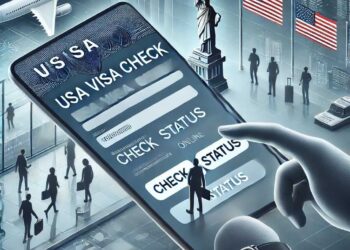Building a strong team requires more than just meetings and discussions. Engaging activities in meeting and event spaces help teams collaborate better, communicate openly, and develop trust. The setting of these activities plays a key role in how teams interact and engage with one another. A well-planned event can turn a group of individuals into a cohesive unit.
This article explores creative ideas for team-building activities that work well in meeting and event spaces. These activities encourage participation, promote problem-solving, and strengthen professional relationships.
Creative Ideas for Team-Building Activities in Meeting and Event Spaces
Escape Room Challenges for Problem-Solving
Escape rooms, like conference rooms in Chennai, have become popular for corporate events. They encourage critical thinking, collaboration, and teamwork. Teams work together to solve puzzles, unlock clues, and find their way out within a set time. Hosting an escape challenge in a meeting space can make it more accessible without the need for an external venue.
To create an escape challenge in a meeting room, set up a series of puzzles and clues leading to a final solution. Divide employees into small groups and set a time limit. The challenge helps in improving problem-solving skills and encourages participants to work under pressure. The excitement and urgency create an engaging atmosphere where different team members can showcase their strengths.
Workshops for Skill Development
Team building activities are not always about games. Interactive workshops allow employees to develop new skills while working together. Cooking sessions, art classes, or even music-based activities can bring teams closer. These activities provide a relaxed environment where employees can bond over shared experiences.
For a cooking challenge, divide participants into groups and provide a set of ingredients. Each group prepares a dish while managing time and responsibilities. The experience strengthens collaboration and helps individuals learn about each other’s work styles. A painting workshop, on the other hand, promotes creativity and allows team members to express ideas visually.
Themed Trivia Contests for Engagement
A trivia contest is a simple yet engaging way to encourage teamwork. A well-organized trivia event in a meeting space can bring energy to the room. Questions can be related to the company, general knowledge, or industry-specific topics. Teams compete against each other, answering questions within a set time.
Adding multimedia elements like images, videos, and sound clips makes the contest more engaging. To keep it fair, teams should have a mix of employees from different departments. Trivia contests improve communication and create a friendly competitive spirit.
Office Olympics for Physical Activity
Physical activities in a meeting space may seem challenging, but simple competitions can be set up indoors. Office Olympics consists of a series of short, fun challenges that require teamwork and strategy rather than athletic ability. These activities help employees break away from routine and encourage participation.
Some ideas include a chair race, paper tower-building contests, or ping-pong ball relay races. The goal is not to create a competitive atmosphere but to ensure participation from all team members. Events like these reduce stress and add an element of fun to the workplace.
Role-Reversal Exercises for Perspective-Shifting
Understanding different job roles within a company improves communication and teamwork. Role-reversal exercises allow employees to step into their colleagues’ shoes and experience a different perspective. This activity is particularly useful for departments that rely on cross-functional collaboration.
To conduct a role-reversal session, pair employees from different teams and ask them to switch roles for a short period. Each person explains their daily tasks and challenges to their partner. At the end of the session, participants share what they learned. This builds appreciation for different roles and fosters better interdepartmental relationships.
Storytelling Sessions for Bonding
Sharing personal and professional stories can bring teams closer. A storytelling session in a meeting space allows employees to express themselves and connect with colleagues on a deeper level. The format can be structured where employees are given a prompt related to work experiences, challenges, or career growth.
Encouraging employees to share stories about their achievements and obstacles builds a culture of trust. This activity helps in developing communication skills and allows employees to understand different perspectives within the company.
Building Challenges for Teamwork
Hands-on activities require planning, cooperation, and creativity. A simple challenge like building a tower using limited materials pushes teams to think outside the box. Each group is given supplies such as straws, paper, or plastic cups and must construct the tallest standing structure.
Another version of this challenge is the “bridge-building exercise,” where teams create a structure that must support a certain weight. The time limit forces employees to manage resources wisely and assign tasks efficiently. These challenges highlight the importance of teamwork and strategic thinking.
Mock Shark Tank for Business Thinking
Encouraging employees to pitch ideas can lead to unexpected creativity. A mock “Shark Tank” event in a meeting space allows employees to present business ideas in front of a panel of judges. The activity promotes brainstorming and encourages employees to think about the business from a leadership perspective.
Employees form small teams, develop a concept, and create a short pitch. Judges, who can be senior leaders, evaluate presentations based on creativity and feasibility. This activity not only improves presentation skills but also encourages employees to think from a problem-solving angle.
Scavenger Hunts for Collaboration
Scavenger hunts create excitement and encourage teamwork. These can be designed to fit within an office environment or a larger event space. The challenge requires employees to solve clues, complete tasks, and locate specific items.
Clues can relate to company values, history, or inside jokes to make the activity more personalized. To ensure maximum participation, teams should be mixed with employees from different departments. The activity boosts engagement and promotes a sense of unity among employees.
Case Study Discussions for Strategic Thinking
Analyzing real-world scenarios helps employees improve decision-making. A case study discussion in a meeting space involves teams reviewing a business problem and presenting solutions. The scenario can be based on industry trends, client challenges, or internal workflow issues.
Employees are divided into teams and given a case study to analyze. Each team presents its recommendations, followed by a discussion. This activity enhances problem-solving skills and encourages critical thinking. It also allows employees to approach challenges from different perspectives.
Improve Sessions for Creativity and Communication
Improvisation exercises boost creativity and encourage employees to think on their feet. A short improv session in a meeting room involves participants acting out scenarios without prior preparation. These activities help break inhibitions and promote quick thinking.
A common improv game is “Yes, And,” where participants must build on each other’s statements without hesitation. Another is “One-Word Story,” where a group creates a story by adding one word at a time. These exercises encourage spontaneity and improve communication skills.
Final Thoughts
Team-building activities strengthen professional relationships, boost morale, and improve collaboration. When choosing activities, it is important to consider the team’s dynamics and work culture. A well-organized session encourages participation, builds trust, and creates a positive work environment.
Meeting and event spaces provide the perfect setting for engaging activities. Whether it’s a trivia contest, escape challenge, or storytelling session, each activity contributes to a stronger team. Planning thoughtful and engaging team-building exercises can make a lasting impact on workplace relationships.











